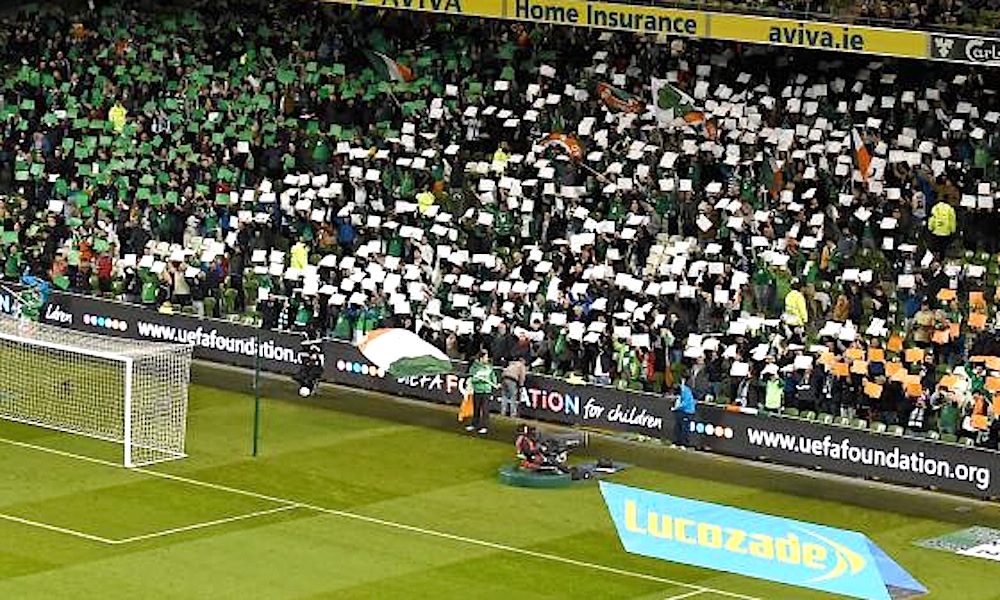
Irish tourism hit new highs in 2016 with a record number of international visitors and the industry is worth over €8 billion annually.
Overseas tourists spent €4.7 billion in Ireland in 2016. This represented a 9% increase, or almost €600 million more compared to what was spent the previous year. Irish air and sea carriers earned a further €1.5 billion from tourists.
Domestic tourism demand also picked up, generating an estimated €1.75 billion, with a further €300 million earned from visitors from Northern Ireland.
According to the CSO, the number of overseas visitors grew by 10% to 8.8 million – the highest number on record – with all four top source markets recording significant growth. There was an increase of 10% in holiday visitors, while business visitors and those coming to visit friends and relatives (VFR) were up 12%.
“It has been a remarkable year for Irish tourism with record visitor numbers in both volume and value terms. 20,000 new jobs have been created in the sector in the last year and tourism is now Ireland’s largest indigenous employer,” said Paul Gallagher, Chairman, Irish Tourist Industry Confederation.
Eoghan O’Mara Walsh, Chief Executive, added: “Irish tourism has performed extremely well in 2016, which is testament to the quality and competitiveness of our tourism product and industry. A number of external factors have also been in Ireland’s favour, including increased air access and a weak euro. It is vital that we chart a path for sustainable growth and avoid a return to the peaks and troughs of previous times.”
2017 – Positive Outlook Despite Challenges
Irish tourism businesses are positive about 2017 and are investing heavily in marketing as well as focusing on the need to continue delivering good value for money. The Government decision to maintain the 9% VAT rate on tourism services continues to support Ireland’s competiveness on the back of operating efficiencies and better value offerings from tourism businesses.
The domestic market, which underpins many tourism enterprises, is expected to see further pick-up in the demand for short leisure breaks as personal finances improve.
Despite Brexit concerns and capacity constraints, ITIC believes that the tourism industry can grow by a further 5% in overseas visitors and 7% in export revenue for 2017, given the healthy state of key source market economies and the increased air access into Ireland.
However, growth is not guaranteed and there is much work to be done to underpin and sustain progress to date. Paul Gallagher said: “Tourism has much more potential for Ireland, but only if the right strategies and investment policies are pursued. ITIC believes that, based on anticipated tourism revenue growth, at least a further 7,000 jobs can be created in the tourism industry in 2017. It is one of the few industries that provides regional balance and delivers jobs in all parts of the country.”
Irish Tourism Industry Priorities for 2017
Brexit: a Major Concern
The UK decision to exit the EU is a major challenge for Irish tourism. Although its impact has been modest to date, the immediate-term challenge has been the weakening of sterling.
Paul Gallagher stressed the need for competitiveness: “As sterling weakens due to the uncertainty over Brexit, it is more vital than ever that Ireland remains competitive. I welcome the Government’s retention of the tourism VAT rate at 9% as this puts Ireland on an even keel with our European neighbours. In fact, 17 of the 19 euro-zone countries have VAT rates of 10% or less. The Irish tourism industry too needs to remain competitive and continue to offer value for money and a high quality tourism experience.”
Of significant concern is tourism’s place within any new EU-UK deal. Eoghan O’Mara Walsh said: “A hard Brexit would be damaging to Irish tourism. It is vital that in the negotiations between the UK and the EU that Irish tourism’s needs are reflected. This particularly relates to the need to maintain the Common Travel Area and the retention of liberalised air access rights.”
Capacity Crunch
Such has been the growth in tourism in recent times that demand has outstripped supply. This is particularly evident in terms of a shortage of hotel capacity in Dublin and other urban centres, which risks limiting the ability of Ireland to attract increasing volumes of visitors. Dublin hotels are operating for much of the year at close to full occupancy due to the city’s popularity as a leisure and business destination. ITIC has long advocated that additional capacity is required in the capital city, Ireland’s dominant gateway.
Paul Gallagher said: “Dublin has significant capacity constraints and visitor number targets will not be met unless the deficit in hotel bedroom development is addressed with some urgency.
“We welcome the fact that up to 5,000 bedrooms are planned for Dublin in the coming years, but construction and development of these new hotels needs to start now. If demand and supply is out of sync, there will always be upward pressure on prices and a loss of competitiveness represents the single largest threat to tourism’s future growth. Should the planned new hotels not materialise, there will need to be policy intervention to stimulate new builds.”
Need for Continued Investment in Tourism
ITIC has argued for some time that there is inadequate investment by the State in tourism. If tourism is to continue to grow, increase jobs, and provide an economic stimulus nationwide there needs to be increased marketing and product investment.
Eoghan O’Mara Walsh expressed disappointment with the level of marketing investment in the recent budget: “The Government committed to a restoration of marketing funds and there has been no progress in this regard. Ireland is losing its share of voice internationally and this will detrimentally affect Irish tourism in the near future unless the marketing deficit is addressed with urgency.”
He also commented that investment in tourism product and infrastructure was at an all-time low. ITIC is calling for a significant increase in tourism infrastructure spending in the upcoming review of the National Capital Plan: “The Government needs to increase capital spending on tourism projects to €350 million over the next five years. This is a small fraction of what tourism contributes to the national economy and the investment is badly needed to ensure that there are new things to see and do of scale and international appeal.”
Tourism 2025; A New Industry Roadmap for Tourism Growth
ITIC publishes a new roadmap for tourism growth and argues that overseas earnings generated by Irish tourism can be worth €7 billion annually by 2025, a 50% increase on the current export value. ITIC is confident that the sector can deliver on this if the right policies and investment strategies are pursued.
Paul Gallagher said: “The current national government tourism targets to 2025 are unambitious and modest. It is high time that a new strategy is put in place for tourism growth that is led by the industry and facilitated by pro-tourism policies from the government. Tourism is in a strong place at the moment and now is the time for the Irish tourism industry to be planning ambitiously for the future. As a sector we can add 50,000 more jobs by 2025 if the right strategy is pursued.”




